Rasina Uberoi, Vice President, Media Transasia Thailand Ltd.
<p align=justify> We planned to make a Globalocal magazine out of the already existing product. Here we took the Global title and enmeshed the global and local content. Hereby, a perfect match for advertisers and readers was created. We look for the leading magazine in its segment in a particular country and import it over to one of our markets in Asia. The strategy has worked. Each of the magazines imported to Thailand and India are leaders in their respective categories, command high average ad rates and a higher cover price than their competitors. </p>

We planned to make a Globalocal magazine out of the already existing product. Here we took the Global title and enmeshed the global and local content. Hereby, a perfect match for advertisers and readers was created. We look for the leading magazine in its segment in a particular country and import it over to one of our markets in Asia. The strategy has worked. Each of the magazines imported to Thailand and India are leaders in their respective categories, command high average ad rates and a higher cover price than their competitors.
Rasina Uberoi has been the face of Media Transasia for the past ten years. As Vice President International development, Rasina scoped the international markets to look for more opportunities and take Media Transasia to the next level. The result has been the successful launch of licensee/consumer titles with relationships with most global publishers. The last twelve months has seen a shift in focus for Rasina towards the digital business. It is something that she embraces and looks forward to developing this aspect of the Media Transasia portfolio. Prior to Media Transasia, Rasina was Vice President, Citibank Thailand, responsible for introducing global transaction services to Thailand and roping in clients like GE, Shell, Toyota and Caltex.
Media Transasia, one of most diversified and vertically integrated publishing houses in the world is known for its range of publishing activities. The group headquartered in Bangkok with three publishing centers - Thailand, Hong Kong and India has in its stable over 25 magazines region wide. It is also known for its specialized coffee-table book publishing arm.
Rasina Uberoi gets candid and shares invaluable insights about the Media Transasia and the future of magazine industry as a whole, in conversation with exchange4media Group's correspondent, Akash Raha.
Q. Do you see Media Transasia moving towards vernacular languages in India owing to their strong growth?I think in regional markets the sheer number of the audience is much more. Literacy rates are improving so the growth will only get stronger. Definitely from a number perspective vernacular language publications are strong. However, for us, this is not our core competency because we are dealing with SEC A markets.
Q. Do you think content is cheap in India and cover prices irrelevant? How did Media Transasia cope with this situation?
When we came to India with several international brands and launched Maxim at Rs 100 (2005-06) people thought we were crazy. At that point of time newspapers were available at Rs 2. People here are used to getting content for very cheap. But I have come into the market saying, that if I am bringing a reputable brand, brand recognition, you are going to pay for that in the same way you pay for a Louis Vuitton product or a Chanel product. People do have the money to buy. It's just this that they are not used to buying it. Are you telling me that you can't pay Rs 100 for a Maxim Magazine? Off course you can, a coffee costs as much. You merely have to change the habit. People will pick up a niche magazine at a price point of Rs 100.
Q. Media Transasia�s titles published out of India are �Swagat�� �Discover India�, �Golf Style�, �Architecture and Design�, �Travel and Leisure�, �Maxim�, �Child�, �Better Homes and Gardens�, �Blender�, �Casaviva �and most recently �Sports Illustrated�. Each of these magazine caters to a selected target audience. Is this a strategy you follow?
Definitely it is. But what we are learning to do is to understand what the audience needs. We saw that there was a market for men magazine in India. We saw that about five years back, and we wanted to be the number one stop for the men in India. We have Maxim, then we launched Blender which is a music magazine and then we have Sports magazine. In one way we would want to converge, and in the other we would like to expand.
Q. From being a successful publishing house, with 35 years experience in Asia, to being a dynamic purveyor of change in the business. How has Media Transasia grown over the last few decades?
Our group started off with the custom publishing business where we did magazines on behalf of multinational companies or local companies. For example we did 'Swagat' for Indian Airlines. Then Media Transasia went into books publishing. Several coffee table books were published too. Ten years ago, I came in and started the international licensing business. I realised that there is a successful brand that exists in the market which has spent years in research. This brand has a recognition and fame in the market. So by acquiring the license, we were bringing in a tried and tested product into the market. We planned to make a Globalocal magazine out of the already existing product. Here we took the Global title and enmeshed the global and local content. Hereby, a perfect match for advertisers and readers was created. We look for the leading magazine in its segment in a particular country and import it over to one of our markets in Asia. The strategy has worked. Each of the magazines imported to Thailand and India are leaders in their respective categories, command high average ad rates and a higher cover price than their competitors.
Q. Do you think there is an inherent measurement problem in India and abroad, apropos magazines?
Yes, this problem exists in Thailand also. We need a qualified readership survey in India which follows a proper methodology. Honk Kong and Singapore are going that way and it will be time before we have to move to that model too. As a Publisher this is something I am going to embrace and accept.
Q. How did Media Transasia cope with recession? What are the targets, in terms of growth for the current year?
I would say that the period of recession was very tough, especially for our shelter magazines. We met our budget, but the budgets were revamped several times. We were able to come out just right. We had to face job cuts in those times too. The period eventually taught us how to use our resources better.
The year 2010 has been good so far. The market is looking positive, the market is looking strong. We have a growth target of 12-15 per cent over the last year. We are well on course of meeting our targets.
Q. In the recently held IRS Q2 2010 survey, 3 out of top 20 magazines have recorded a negative readership. What does this trend suggest in India?
This is all an evolution and it's going to slowly change. I also have a hitch about how magazine readership surveys are done. There are different ways of doing it but you generally go from house to house and ask. However, if you go to a second tier village and go house-to- house they will have no idea what 'Travel and Leisure' is, they will have no idea what 'Better Homes and Gardens' is. They are not used to seeing these magazines. Conversely, if you are going to go to top metro cities and see localities in Gurgaon, Hauz Khas etc, you are going to find a big difference in the kind of readership you find over there. India is such a big country, you take a sample size and then you generalize it and stereotype it which doesn't work in a large and diverse country like India.
Q. What are the upcoming trends that you observe in the market?
We will have to embrace the digital world the sooner, the better. I don't want to say that it would erode the newsstands but we should attempt to move towards newer markets (digital and mobile). There is a huge potential of readers in this market. They might not pick up my magazines because they might not even know that they exist. The power of the digital world is something we can't ignore. However, I still strongly believe that magazines are here to stay for all of us.
Q. There is this hullabaloo in the industry over the fate of the magazines. Several people believe that magazines will cease to exist. Reality or a Myth?
No, absolutely not, magazines will always exist. I am carrying my Ipad right now and I have lots of magazines downloaded on it. However, it can never take away the experience of turning pages, curling up in bed, lying on the beach which only paper and ink magazines can give. Things like Ipad devices aren't going to give that. India is inherently a reading dominated nation, people love to read over here as they are very intellectually driven. There a huge growth in the youth market. Youth, who are educated and there is a group of them who don't even read magazines yet. So there is a vast scope of penetration in this market. The magazine industry will only grow.
Q. How do you see newer media mediums effecting magazine? Will it annihilate it, or liberate it?
I don't think newer mediums are going to annihilate or overpower traditional print. It's different for newspapers as for current events you can very easily get news online or on your mobile. However in Media Transasia, most of our magazines are niche market driven. If you have a fashion magazine, you can lie down on your bed, relax and read it. It's not something that you run to the newsstands for. Take travel magazines for instance, you want to be the part of that destination you want to be able to touch it and feel it an experience which only magazines can give. It is this feeling, this attachment that the reader has with magazines which is always going to exist.
However, I feel there is a huge scope of growth in the online and digital sphere. Introduction of the tablets is great for publishing. The model is to pay for that particular article. And that is where the tablets are moving. Two years back we launched seventeenthailand.com and today, coupled with other online properties in India and Thailand the company reaches over one million unique visitors a month. In Oct 2008 we formed a joint venture relationship with Dennis Publishing Limited to concentrate on the digital business in India. Also, on December 1, 2009 we launched Travelandleisureasia.com which is Southeast Asia's biggest travel magazine online, with exclusive web content.
I am personally devoting my time on several mobile initiatives in both Thailand and India. Mobile penetration is huge in both of these countries but more interestingly, we Asians are used to paying for content on our mobiles, something which was very difficult to monetize in our digital business.
Read more news about (internet advertising India, internet advertising, advertising India, digital advertising India, media advertising India)
For more updates, be socially connected with us onInstagram, LinkedIn, Twitter, Facebook Youtube & Whatsapp
Rob Norman, Global Chief Digital Officer, GroupM
<b>We need to create advertising assets that are not just compelling but "thumb-stopping" creative: Rob Norman, GroupM</b><br><br>
Addressing delegates at the International Advertising Association (IAA) Cabana, during the Cannes Lions International Festival of Creativity 2016 in a special session held by Hindustan Times, GroupM’s Global Chief Digital Officer Rob Norman stressed upon significant issues in managing supply chain in digital media.
“Everything boils down to an interesting notion - what presents an authentic opportunity? Every advertiser, when he spends money on an impression or on any other unit of advertising has the legitimate expectation that the publisher will be one in which the advertisement is seen by a human being for at least a feasible amount of time, and not by a robot or a fraudster,” he said.
What is a legitimate opportunity is not entirely a consistent notion, the speaker said, “because if you are looking at something and it is static on the screen for a given time, it is easy but if you are scrolling with your thumb at 500 pixels per second, which is often the case in feed-based environments, the mere fact that something passes through a viewable window may or may not be determined as legitimate opportunity. So working on the forward regulation and the commercial agreements around viewablility on a platform-specific basis is a huge priority for us.”
In his view, everyone in the supply chain has their own set of responsibilities. While the publisher has the responsibility of providing authentic opportunities, the advertiser has the responsibility to grow the propositions around the products and services that are of relevant value to the consumer. The creative partner, in all of this, has the responsibility of taking that proposition and making it compelling and sufficiently arresting to consume and the media agency has the responsibility of placing it in an environment that is fit for the target that it offers value. These are the fundamentals for digital advertising.
Does that require a different set of behaviour in the ecosystem between the stakeholders? While in some cases it does, he feels there are cases where it is in fairly perfect harmony. "Only by briefing (stakeholders) together can there be a harmonious implementation of the plan, and an equally harmonious attribution plan that allows you in setting an objective, defining a fit-for-purpose media placement," he said.
Touching upon the subject of ad-blocking, Norman explains that there has always been a covert contract between the publishers and users of the content - if the user does not want to pay directly for the content then he has to tolerate the amount of advertising for which he may or may not pay attention to. However, with the rise of the ad blocking software, the covert contract gets broken and the user of the ad blocking software chooses not to participate in that contract by blocking the monetization mechanism of the publisher.
In order to resolve this problem, the publisher either has to create content of sufficient value, which people will accept, with the ad blocker turned off or build a greater value by turning into a monetization model from advertisement-driven to subscriber-driven. Norman further stressed upon the need to create advertising assets that are not just compelling but “thumb-stopping” creative.
Responding to a point regarding video consumption patterns on mobiles, Norman pointed out that the lag in adoption of 4G technology has affected video consumption in various parts of the world, particularly India. Giving the context of the Indian market, Norman explained that the only app that works on the 2G platform is Facebook since it has been built fit-for-purpose by downgrading many of its features that could mar speed. Issues such as buffering of video content existed on 3G platforms as well and that 4G has been introduced only in some parts of the country.
Q.
Arun Iyer, Chief Creative Officer, Lowe Lintas
“Go to a pitch with your point of view, not necessarily what the client wants, because at the end of the day they come to you because they want your thinking,” believes Arun Iyer, Chief Creative Officer, Lowe Lintas.
“We don’t carry options for pitches we go with a point of view, we strongly feel about, which is also why about 80 per cent of the pitch work is actually the first piece of work that we do for a client,” he shares.
Iyer, who took on the mantle of CCO last year, was earlier joint NCD with Amer Jaleel. As CCO, he believes one of his jobs is to make sure that while today is good, the next six months are lined up well.
The agency has consistently been in the news be it for kick-starting the year with its winning performance at the Effies or its recent work on Google’s photo feature that is being widely shared.
“I would like Lowe Lintas to be seen as an agency that a client would want to go to because they want a good idea on their brand which is medium agnostic,” adds Iyer. The world is headed towards ‘hyper-bundling’ (with clients are getting tired of handling multiple agencies) he believes, even as lays emphasis on getting mainstream teams to think digitally.
A candid Iyer shares his views on correcting the perception about Lowe just being a TV agency, why the move from NCD to CCO was not a dramatic one, what prompts ‘Ghar wapasi’ at Lowe, why he thinks there is a lot of ‘gas’ around ‘digital’ and more …………
Edited Excerpts-
Q. What are your expectations from Cannes for Lowe Lintas? We don’t enter from India so some of our work maybe entered from our global offices. My guess is that Lifebuoy Chamki entered by our Columbia office will do well at the awards.
Q. When you say ‘well’, it translates to Gold, Silver, Grand Prix? To be honest, I don’t understand that game too well, but I have feeling that it will be Gold.
Q. What are the changes that have been on your agenda as CCO? I am personally working very consciously towards correcting the perception about Lowe just being a TV agency. Chamki is a step in that direction, what we did for Paper Boat with ‘Hum Honge Kamyaab’ is a piece of content. Again what we have just done for Google Photos is actually content, there are many more things in the pipeline.
TV is still important and we do a lot of TV but somewhere, the world needs to start recognising that we are an agency that comes up with big ideas and that they sometimes happen to be led by TV. Even if you take for instance Tata Tea’s Power of 49, it’s actually a far bigger idea than the television commercial we created. But somehow the world still considers us only a television agency. That’s been the big shift that I have been working consciously on over the last one year.
I am not trying to change Lowe Lintas; I am trying to reach out to the world and actually tell them what we do, which is that we come up with ideas that are beyond television.
If you take Kissanpur, it is an idea that was born in our agency and the fact of the matter is that Kissanpur manifested itself in one TV commercial, and a whole bunch of forms like a huge activation idea, we have, in fact, created a great platform for the brand, and on the back of which we won global effectiveness awards.
Q. What are the challenges you face currently? The biggest challenge is to drive consistently good work. I think it’s a huge challenge because the only way to do that is to empower your people, align with the kind of stuff we need to be doing, and communicate clearly that this is the level at which we need to operate. Set a base level and let nothing drop below that - which is a continuous challenge. The only thing I worry about, fuss about and I keep telling my teams is; what’s coming up? What can we do better?
The challenge is also to continue the great creative culture that we have. To be honest, I have been really lucky, I have got really great people a really great team - the creative heads including the creative team.
Q. Do you think there is an over-emphasis on digital these days? Yes, 100 per cent, whilst digital is important because the mobile phone is transforming our country, and we cannot run away from that, but the noise around it in our industry is a lot of gas around this word ‘digital’.
Somebody needs to cut through it and get to the point of what is it that needs to be done. And that is what we are attempting to do with Linteractive’s new framework Deep Digitisation, which we have been working on since the last eight months.
We are trying to not let the clutter get to us and see how we can genuinely transform into an agency that thinks well digitally.
Q. How has this one year been for you? It has been exciting because we took the opportunity and we were confident enough to think that we can actually start another agency; it was a big call at that point of time.
The good part is that Mullen (Lintas) is doing very well and I think they are doing some nice work. This one year has been very hectic but we have managed to consistently put out work that has generated enough conversations for the agency, we have managed to put out great work, and create a culture that people want to belong to.
In fact, we have a term that people joke around in the agency called ‘Arre iski bhi Ghar waapsi hogayi’; there are so many people who have left us and who have pretty much come back soon. One of the things I am quite arrogant about is that when people go out of our system, they realise the value of our system.

Q. How has it been on an individual level? I have spent lesser time than I would have liked with my family but they have been supportive enough. I know the Mumbai Airport better than anybody in the city right now. It’s been a lot of travel but what I have absolutely enjoyed the most is, working with a lot of creative people and that number has increased a lot more now. For me, the trip in life is to actually sit and jam with creative people and come up with solutions and I have got more opportunity to do that so, it’s absolutely fantastic.
Q. You have been with Lowe since 2003, how did things change for you from NCD to CCO? I joined as a copy writer in 2003 and I have grown through the ranks.
When I became NCD in 2010, it was a dramatic shift for me. There are three levels between GCD and NCD. Balki picked me and said sit here, so I skipped three levels to run one group in the office on the 13th floor and suddenly, I was running half of Bombay, all of Bangalore and Chennai. So, that year was dramatic in my life. Since I have worked for six years as NCD, this was a smoother transition.
Q. You never wanted the option of running Mullen? That’s actually a conversation between Balki(Group Chairman of MullenLowe Lintas Group) Joe (Regional President, South & Southeast Asia, Group CEO India, Mullen Lowe Lintas ) me and Amer (Chairman & Chief Creative Officer Mullen Lintas) and it was a good three-four rounds of discussions until we came to a consensus on the structure we want. So, it wasn’t a diktat or a personal decision, we sat together and we said, okay, this is what is best to do.


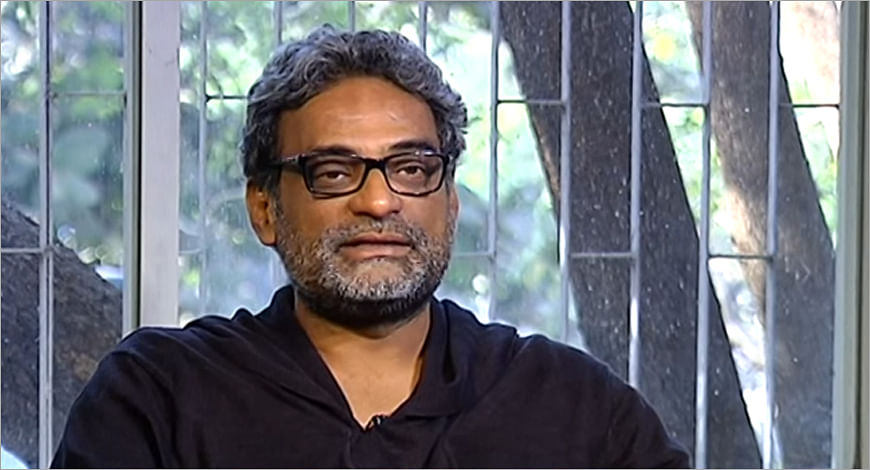
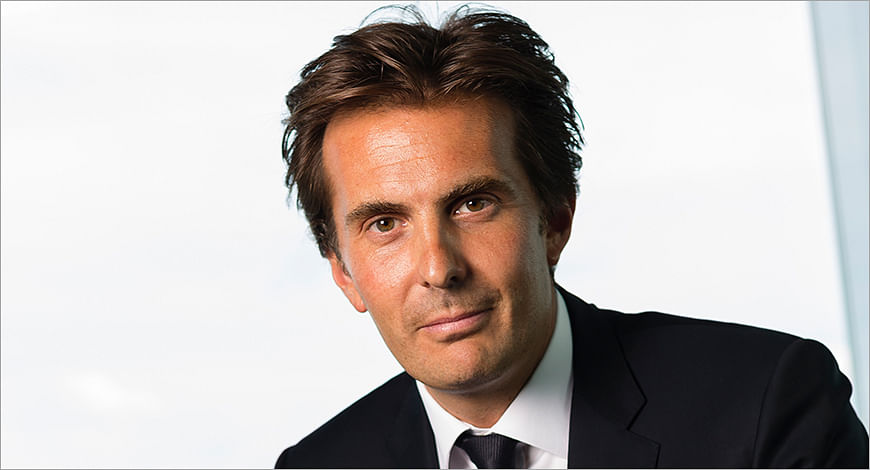
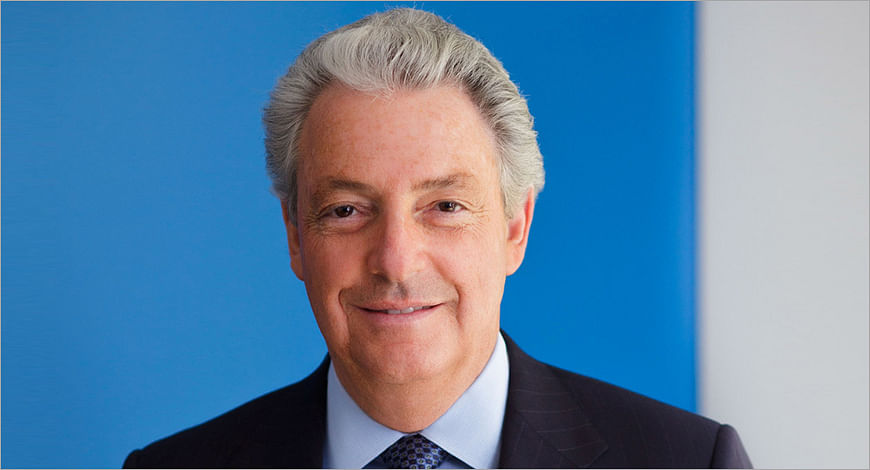
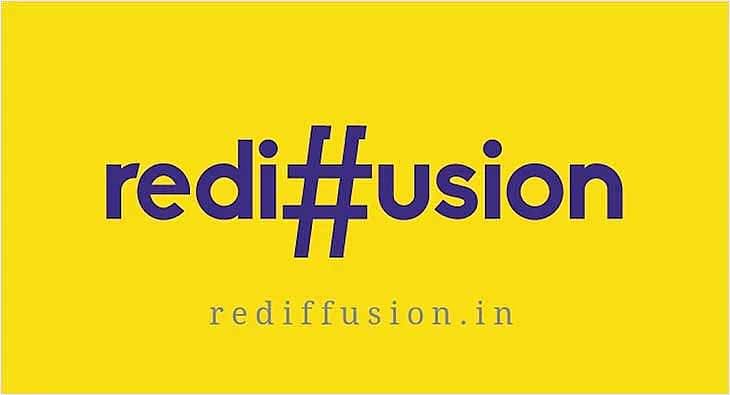





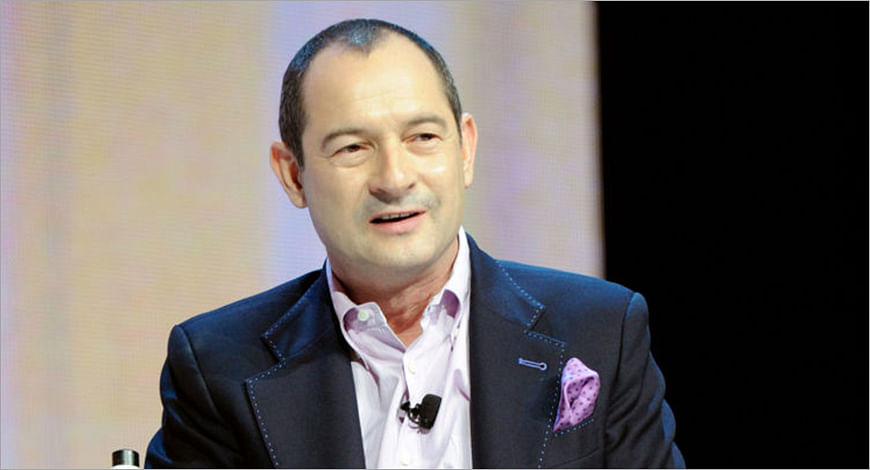
 Share
Share